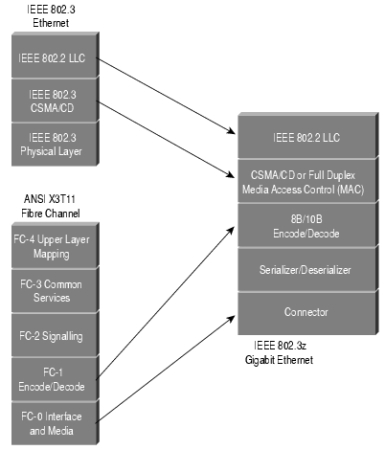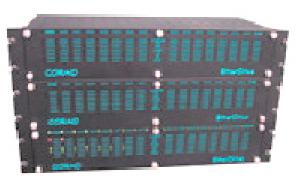Intel releases Fiber Channel-over-Ethernet stack for Linux
Dec 19, 2007 — by Eric Brown — from the LinuxDevices Archive — 2 viewsIntel Corp. has released “initiator” source code to enable Linux implementations of Fibre Channel over Ethernet (FCoE). By allowing fiber channel SAN traffic to run over Gigabit Ethernet networks, says Intel, storage area network (SAN) and LAN traffic can be consolidated, simplifying network infrastructure in datacenters.
Intel's Open-FCoE.org site provides developers with a downloadable software initiator package, complete with source code, says Intel, as well as a target simulator, so Linux developers can test and modify the FCoE software stack. The code can be modified according to GPLv2, and the site provides an area for code contribution and feedback.
By releasing the code as open source Linux, it appears that Intel is trying to accelerate development for the technology to compete with more established rival technologies like iSCSI, which uses TCP/IP to enable remote storage devices.

The Gigabit Ethernet protocol was partially based on fiber channel.
Now FCoE and iSCSI aim to bridge both network technologies
(Source: Cisco Systems)
Fiber channel was invented to overcome the speed limitations of Ethernet, but then Gigabit Ethernet was developed, borrowing fiber channel's high-speed physical interface technology (see diagram above). Now that 10-Gb Ethernet is common and affordable — and faster than fiber channel — the storage networking community is looking to various schemes such as iSCSI and FCoE to integrate SAN with Ethernet.

Coraid's EtherDrive
(Click for details)
Another rival scheme is Coraid's Linux-compatible EtherDrive, which is based on its ATA-over-Ethernet (AoE) protocol. The system is designed to enable inexpensive commodity ATA (IDE) disks to be used in SAN devices that work over standard Ethernet networks.
SANs are arrays of disks that attach to the host via low-level disk protocols, such as SCSI and ATA, rather than the higher-level network protocols used by NAS (network-attached storage) equipment. SANs typically connect to servers via fiber channel cables that attach to an HBA (host-bus adapter) card in the server.
Intel is collaborating on FCoE with Cisco Systems, which is said to have submitted the initial FCoE proposal to the fiber channel standards body, T11, in April. Intel's FCoE initiator code is based on a specification being developed by the T11's FC-BB-5 work group, says Intel.
Storage analyst blogs are full of arguments both for and against FCoE. Yet, all these protocols are likely to thrive for awhile, and potentially find synergies to work together. From the point of view of embedded Linux developers, FCoE may open up some intriguing new possibilities. With Cisco and Intel behind it, the protocol appears to have some momentum behind it.
Stated Pat Gelsinger, senior VP and GM of Intel's Digital Enterprise Group, “FCoE makes it easier and less expensive to connect servers to the SAN. We expect the open source community to use this initiator stack to create reliable, standards-based FCoE solutions for their customers.”
Availability
The FCoE source code is available now at Open-FCoE.org site, says Intel. The final FCoE specification is due for completion in 2008, says Intel, but the company did not reveal future plans for products. Industry reports suggest that Cisco and Brocade are both expected to ship FCoE switches around the same time using Intel adapter boards.
This article was originally published on LinuxDevices.com and has been donated to the open source community by QuinStreet Inc. Please visit LinuxToday.com for up-to-date news and articles about Linux and open source.